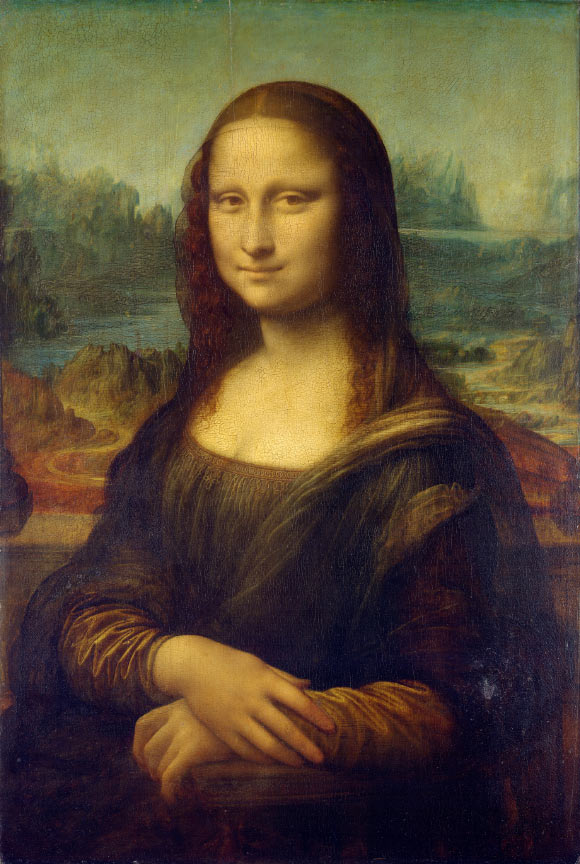An international team of scientists from France, the Netherlands and the United Kingdom has found a singular mixture of strongly saponified oil with high lead content and a lead white pigment in a microsample from the ground layer of Leonardo da Vinci’s Mona Lisa. The most remarkable signature in the sample is the presence of plumbonacrite, a rare compound that is stable only in an alkaline environment.
Many paintings from the early 1500s, including Leonardo da Vinci’s Mona Lisa, were painted on wooden panels that required a thick, ground layer of paint to be laid down before artwork was added.
A team of researchers led by Université Paris-Saclay scientist Victor Gonzalez found that da Vinci experimented by laying down thick layers of lead white pigment and by infusing his oil with lead monoxide (PbO), an orange pigment that conferred specific drying properties to the paint above.
da Vinci used a similar technique on the wall underneath his Last Supper — a departure from the traditional, fresco technique used at the time.
To further investigate these unique layers, Dr. Gonzalez and his colleagues wanted to apply updated, high-resolution analytical techniques to small samples from these two paintings.
They analyzed a tiny microsample previously obtained from a hidden corner of the Mona Lisa as well as 17 microsamples from the surface of the Last Supper.
Using X-ray diffraction and infrared spectroscopy techniques, they determined that the ground layers of these artworks not only contained oil and lead white, but also a much rarer lead compound: plumbonacrite (Pb5[CO3]O[OH]2).
This material had not previously been detected in Italian Renaissance paintings, though it’d been found in later paintings by the Dutch painter Rembrandt in the 1600s.
Plumbonacrite is only stable under alkaline conditions, suggesting that it formed from a reaction between the oil and lead monoxide.
Intact grains of lead monoxide were also found in most of the samples taken from the Last Supper.
While painters were known to add lead oxides to pigments to help them dry, the technique has not been proved experimentally for paintings from da Vinci’s time.
In fact, when the researchers searched through his writings, the only evidence they found of lead monoxide was in reference to skin and hair remedies, even though it’s now known to be quite toxic.
“Though he might not have written it down, these results demonstrate that lead oxides must have had a place on the old master’s palette, and might have helped create the masterpieces we know today,” they said.
Their paper appears in the Journal of the American Chemical Society.
_____
Victor Gonzalez et al. X-ray and Infrared Microanalyses of Mona Lisa’s Ground Layer and Significance Regarding Leonardo da Vinci’s Palette. J. Am. Chem. Soc, published online October 11, 2023; doi: 10.1021/jacs.3c07000




![Chemical structure of the cyclo[48]carbon [4]catenan. Image credit: Harry Anderson.](https://cdn.sci.news/images/2025/08/image_14141-Cyclo-48-Carbon-104x75.jpg)



